“Man, all of these games that take heavy inspiration from Left 4 Dead’s co-op horde shooter formula are great and all, but they’re all missing something. I wish somebody would just make a modern version of Left 4 Dead.”
Back 4 Blood is released.
“No, not like that.”
Back 4 Blood is a game that makes a few of the right moves, but which otherwise keeps tripping and stumbling headfirst into a minefield at every possible opportunity. This is both surprising and yet utterly predictable at the same time, given how much it is obviously supposed to be a spiritual successor to Left 4 Dead. It’s by the original developer, Turtle Rock, so it has “by the original developer of Left 4 Dead” in all of the marketing. It has an almost-identical premise of playing one of four survivors stuck in the zombie apocalypse fighting their way from saferoom to saferoom using a variety of guns, melee weapons and explosives. It has special infected equivalents who are tougher than regular zombies and who have special abilities, and almost all of them are direct analogues of a L4D version — the Boomer is here, and the Hunter, and the Jockey, and the Smoker, and the Tank. It has an AI Director in the background that’s supposed to be pseudo-randomising the levels and intelligently spawning hordes and specials in response to player actions in order to keep the pressure up, just like Left 4 Dead. Long story short, Back 4 Blood is very intentionally as close as Turtle Rock think they can get to making Left 4 Dead 3 without getting sued by Valve.
But while Back 4 Blood might have been intended as a demonstration of what a modern Left 4 Dead should look like, what it actually is is a damning indictment of the last 13 years of “progress” in game design. The original Left 4 Dead, released in 2008, surpasses Back 4 Blood in almost every single respect because it invented the genre. It wasn’t chasing any trends; it knew exactly what it wanted to be and didn’t feel like it had to include any extraneous mechanics or overstuff itself with features for the sake of being different. Yes, part of this piping hot take is going to be because I put 300-plus hours into Left 4 Dead back in the day and I really really like that game, but that’s a rod Turtle Rock made for their own backs by specifically evoking and referencing Left 4 Dead in so many ways that’s it’s absolutely impossible not to directly compare the two games at every juncture. And Back 4 Blood comes off worse almost every single time.
Let’s start by talking about the elephant that’s supposed to be in the room when you’re talking about a Left 4 Dead successor, but which is conspicuous by its absence in Back 4 Blood: Versus mode. The entirety of Left 4 Dead was designed around Versus mode, where a team of four human survivors attempted to make it through a level while an opposing team of four humans coordinated the constantly-respawning special infected to stop them. True, it could be played as a solely co-op game with AI taking over the role of the special infected, or even as a solely single-player game with bots also filling in for the other survivors, but the game mechanics didn’t change from mode to mode; a Hunter in single-player is exactly the same as a Hunter in Versus, except for being controlled by an AI that would land one pounce and then die rather than a human that would pick a target and coordinate with the rest of the zombie team to incapacitate multiple survivors at once.
Now, I want to be clear about this: I do not miss Versus mode itself, per se. If Back 4 Blood had a Versus mode I wouldn’t play it; the L4D version could get particularly sweaty at times (well, all of the time) and I’m too old for that now. I just want to shoot zombies with my friends, and so I don’t think less of Back 4 Blood for not including it as a gameplay option. What I do miss, however, is the campaign balancing that arose from the existence of Versus mode. Some might view having to balance the entire game around a competitive multiplayer mode as restrictive, and arguably it is, but in Left 4 Dead’s case it is restrictive in the right way. Left 4 Dead could never resort to lazy solutions the way Back 4 Blood does; its level design had to be absolutely top-notch in order to provide a challenging run for the survivor players without leaving too many points where the infected players could easily incap the entire team in one go, and its weapon and infected ability design was all built around the assumption that there would always be four survivors and four special infected in the game at any one time — no more, and no less. This produced a superbly focused set of campaign levels that interspersed slower “safe” periods when the infected team was either waiting to respawn or biding their time prior to an attack with short, sharp battles where the infected tried to inflict as much damage as possible on the survivors before they were all killed.
Contrast this with Back 4 Blood’s take on a campaign. The game is split into three Acts of 10-12 levels each. Because it’s co-op only (you can’t play infected at all except in the terrible DPS race mode, which is not at all like the rest of the game) this means that the levels don’t all have to be about running from a start point to an end point with a climactic horde battle in the final level, which is theoretically a good thing and something that Back 4 Blood does at least attempt to leverage in places. The problem is that its application of this newfound freedom is extremely uneven, with the levels split evenly between longer ones which are modelled after the L4D paradigm, and shorter ones which I can only describe as “filler”. The shorter ones have a tendency to re-use levels (the fort-and-suburbs level is re-used a whopping four times) with slightly different routes and enemy compositions and absolutely no other changes. Run past the diner to rescue survivors while fending off zombies and special infected! Now run past the diner to deliver boxes while fending off zombies and special infected! Now run past the diner to fight some bosses while fending off zombies and special infected! Because they’ve been built for reusability rather than because anyone actually gave a shit about them as a concept or as a place these filler levels have the most generic layouts and landmarks possible, and this leads to serious problems with level legibility because there are next to no tells on where the route forward actually is. Since they’re re-used in every single one of the game’s Acts you end up getting lost inside of this bland, uninspired and repetitive level design a lot.
About the best thing I can say about Back 4 Blood’s level design is that these filler levels “only” comprise about half of the game. The other half of the game is made up of those longer levels more comparable to Left 4 Dead, and while the design here is definitely more… variable in quality, shall we say, than in Left 4 Dead it’s rarely unpleasantly so. There’s levels comparable to Blood Harvest in here, a couple of levels that take inspiration from Hard Rain, and then some of the smaller ones repurpose the scavenger hunt PvP mode as a single-player mechanic — walk around a large-ish arena looking for randomly-placed nest thingies to blow up — in a perfectly decent way. Sadly there’s a couple of duff levels in here too, with some really weird design choices — one of the Hard Rain-ish levels has you wading through flooded mobile homes for the entire length of it, conditioning you to think “water is no problem”, and then the level immediately following it contains pools of water that look identical to the water in the last level but which instantly kill you if you touch them. And because of the way they’re interspersed with these shorter, disposable filler levels it feels like the game never gets up to speed the way it should. There’s no rhythm to it the way there is in Left 4 Dead. None of these levels would have flown there, with its relentless focus on the adversarial PvP side of things; you definitely wouldn’t have had any of these levels that were so bland and nothing-y because where does the conflict come from? Where are the ambush points? Nowhere, because half of the levels are just this bland melange of nothing, and because the level design in general is so messy it means that difficulty doesn’t arise from the level layouts and set-piece events, where they exist — things that can be predicted and planned for, in other words — but instead from Back 4 Blood’s entirely bullshit philosophy around the AI Director and its spawning of special infected enemy types.
Again, I have to do a direct comparison with Left 4 Dead here to explain why I think Back 4 Blood’s take on the special infected is so awful. In Left 4 Dead the main danger the special infected pose is that they’ll disable you temporarily so that you can’t help your friends as they get picked off by other special infected or the zombie horde. Unless you’re a Hunter landing a pounce from the top of a skyscraper, pure damage is just not on the menu here, especially because Left 4 Dead’s special infected are vulnerable. They die to a single shotgun blast, or to a few rounds of assault rifle fire; if the Survivor team is on the ball they just won’t have time to get stuck in with their claws before they get shot off whoever they caught, unless the Infected team coordinates their attacks to disable multiple survivors at once. Run-ending attacks from Left 4 Dead’s special infected were rare, even when controlled by human players; most levels had certain danger points — usually next to a sheer drop — where there was the potential for this, but all of the special infected had to be up at the same time and prepared for the ambush and all of them had to land their attacks perfectly. If this didn’t happen then it became a war of attrition; the special infected might not be able to deal that much damage in one go, but multiple attacks over the course of a level could wear a survivor team down to the point where they couldn’t continue. Which is as it should be in a game about human survivors fighting their way through the zombie apocalypse.
Every time I fight Back 4 Blood’s special infected (or Ridden, but that’s a stupid name so I’m not using it), though, I get the very distinct impression that Turtle Rock looked at the good work they’d done in Left 4 Dead and then proceed to do the exact opposite of that for Back 4 Blood. Where Left 4 Dead limited special infected numbers to a maximum of four alive at any one time, there’s no such restriction on their numbers in Back 4 Blood, which will enthusiastically spawn them in such quick succession that there can be five, six or even seven trying to kill you at once. Where Left 4 Dead made the special infected vulnerable so that they had to rely on surprise, positioning and coordination to do any real damage, every single one of Back 4 Blood’s special infected takes multiple magazines of ammunition to kill — even the Boomer equivalent, which will quite happily soak up thirty rounds or more before exploding. I’m prepared to accept that they needed a comparative boost in power to make up for the fact that they’re exclusively AI-controlled now, but increasing their numbers by a factor of two and their HP by a factor of ten (or more) is the laziest and least interesting way Back 4 Blood could possibly have gone about it. In Left 4 Dead if a Charger turned up you could play it smart as a survivor, baiting their charge and then pumping enough auto-shotgun rounds into their back to kill them. In Back 4 Blood if the equivalent enemy — a Tallboy — shows up you can fire an entire drum of shotgun ammo into its face as it walks towards you and it won’t even flinch, and then when you’re stuck reloading it’ll wind up a bullshit undodgeable attack that takes off a quarter of your health bar. And when you eventually manage to kill it you then have to deal with the second Tallboy, the Boomer and the small Jockey-thing that the game helpfully spawned at the same time
Looking back on what I’ve just written, and thinking back to my experiences with the game, I think the bulk of my problem here is with the Tallboy in particular. The other special infected types feel disproportionately tough, but they also feel manageable for a coordinated survivor team since their attacks and abilities are intended to punish people who get caught out of position; if you stick together and focus fire you can deal with them. The problem, though, is that Back 4 Blood really, really likes spawning Tallboys in preference to anything else. It feels like half of all of the special infected you fight are Tallboys, especially given the game’s weird predilection for spawning two or more of them at the same time; there’s a reason one of the memes that went around shortly after the game’s release is this pisstake of the Back 4 Blood cover art, except with all of the zombies replaced with Tallboys, because I am far from the only person who feels this way. They perfectly epitomise all of the flaws with Back 4 Blood’s special infected design, because where’s the potential for smart play when a Tallboy turns up? There’s no good way of killing them quickly — all of Back 4 Blood’s special infected have glowing weak spots you can shoot for massive damage, but the Tallboy’s is on its shoulder that it keeps pointed away from the survivors at all times — so all you can do is walk backwards while shooting it in the face. This isn’t fun. Killing a Tallboy never feels like an achievement, it just feels like a waste of ammo, especially because there’ll be three more along in a minute.
Believe it or not I am trying not to be annoyed that Back 4 Blood isn’t actually Left 4 Dead 3. No, really. There are plenty of games out there that have taken the basic concept of Left 4 Dead and put their own spin on it, like Vermintide and Deep Rock Galactic, and I’ve enjoyed almost all of them. You don’t have to slavishly follow the design principles of Left 4 Dead to make a great co-op horde shooter, you just need to be reasonably thoughtful about the new elements that you add so that the game balance remains taut and fun. But when you do something as stupid as “just double the numbers and increase the HP bars by 10x and then call it a day” I can’t help but be annoyed, especially when you’re explicitly marketing yourself as a spiritual successor to a game that was very, very clever about nearly everything that it did. And I’m not even finished yet, because Back 4 Blood’s boring levels and uninteresting enemies might be irritating on their own but they’re mere symptoms of the biggest problem of all, which partly arises from the one actually new and interesting mechanic that Back 4 Blood introduces: the card system.
The card system is the one… no, one of the two parts of Back 4 Blood that I actually like. The other is the guns and the shooting of them, which is a really important thing for a first-person shooter to get right and which is an achievement I don’t want to diminish in any way because you’d be surprised at how many games screw it up, but which is difficult to get into in detail — the guns sound crisp and meaty, have good feedback, and inflict satisfying damage on the regular zombies, and that’s about all I have to say about them. But the cards are a much more interesting thing to talk about. “Cards” is a bit of a misnomer; that’s how they’re represented in game since Slay The Spire made cards cool again, but what they actually are is your character’s skill build. The way this works is you put together a deck of 15 skill cards. Cards are drawn from the deck in the order that you added them — no shuffling or randomisation here — to give you a hand of five that you can choose from. Selecting a skill card adds it to your current build; the remaining four cards remain in your hand and you draw another card to replace the one you picked. You pick two or three skills at the start of an Act, and then you get to pick another one at the start of every subsequent level, gradually powering up your character.
The card variety and breadth of skill builds possible in Back 4 Blood is actually pretty impressive. There’s something like 200 cards in the game, which must unfortunately be slowly unlocked one at a time via one of the most idiotic progression systems I’ve so far seen in an online game, so when you’re starting out it feels rather gimmicky because it’s impossible to see all of the possibilities on offer. At first a card like “get 5 additional money every time you loot money” feels rather underwhelming. And on their own it’s true that most of these skills are either not that impactful, or else carry some corresponding disadvantage — Back 4 Blood will dial up numbers on individual cards to heights other games would be terrified of exploring, but that “+60% ammo capacity” effect will always be paired with a “-30% stamina efficiency”. When you start to stack them together, though, the various effects really do add up; the difference between a character at the start of an Act who has just two skills unlocked and a character at the end of one who has all fifteen is pretty absurd, assuming you put your skill deck together correctly.
At first you just try and put all of the things boosting one type of damage together, making a Shotgun deck or an SMG deck, and this can be moderately effective, if a little dull and very dependent on your picking up the right type of weapon — it can be pretty annoying to take your Shotgun deck into an Act and then have the game not offer you a single shotgun pickup for the first five levels. But there’s more interesting builds available that the game seemingly tries to nudge you towards. For example, one of the negative effects you can get on a card to balance out a particularly beefy bonus is “Can’t aim down sights”. On its own this is pretty annoying, as the base hipfire accuracy of your character is not great and you won’t be able to hit anything past medium range without iron sights. However, there are also cards that increase your hipfire accuracy which can reduce it down to 0 spread — so every round goes dead in the centre of the reticle — and you’ll also notice that there are multiple cards which have the “No iron sights” penalty. Since it’s impossible for this penalty to stack, if you take one of these cards you might as well take them all, and if you do what you end up with is the ability to fire an SMG with laser-like precision and to reload it in a fraction of a second, allowing you to effortlessly mulch entire hordes as long as your ammo reserves hold out.
What I particularly like about the card system is how predictable it is. You always get one card draw per level, and cards are always drawn in the order in which you put them into the deck. There are certain cards which are best picked early on in an Act; every saferoom contains a shop where you can buy either new guns and attachments or some very expensive passive upgrades for auxiliary items like grenades and healthpacks, but to afford the latter you need a lot of money. This is where that “get 5 additional money every time you loot money” card comes in very handy, and there are also a couple of additional money-boosting cards that, if taken together at the start of an Act, allows you to buy every single passive upgrade available. The grenade upgrades in particular will more than triple the damage a single grenade does if upgraded all the way, so it’s good to also sprinkle in a few cards which further boost grenade capacity and damage. A fully-boosted grenade is the only thing in the game which will one-shot a Tallboy, and a stack of five of them will melt any of the actual bosses the game occasionally spawns, which conveniently tend to show up towards the end of an Act when you have all of this stuff online. This deck wouldn’t be possible if the draws were randomised, as it relies on the snowball effect of buying an entire Act’s worth of passive upgrades, which wouldn’t happen if you could not guarantee drawing those money-boosting skill cards in your opening hand.
I really do like Back 4 Blood’s skill/card system. It’s an interesting idea with a lot of potential depth, and I’d like another, better game to pick it up and do something worthwhile with it. Unfortunately that game is definitely not Back 4 Blood, which has managed to both compromise itself in service of the card system — I am reasonably sure that the “filler” levels I talked about up top are a last-minute addition to the game that only exist because of the need to grant one skill card per level, which means Acts need to be 12 levels long — and which has also managed to render said card system completely useless thanks to its insanely overtuned difficulty levels. It has three of them, and my friends and I dutifully started out on the lowest difficulty level, Recruit. This initially seemed pretty well-pitched as we played through the game’s three Acts and learned the levels and systems; however, towards the end, when we had a fair number of cards unlocked, and despite the bullshit special infected balancing, it started to get noticeably easy. We knew where to go, we knew what to do, and we’d sussed the deck system sufficiently that we were finishing levels with pretty much full health. Time to take things up to the next difficulty level, Veteran, right?
Wrong.
I have made four attempts on Veteran difficulty so far. While I’m not exactly an expert at co-op horde shooters I’m no slouch at them either, and my friends who were playing with me all fit the same description: Left 4 Dead veterans with several hundred hours played across the original game and its sequel, and who used the Recruit playthrough to shake off any rust that might have built up over the intervening decade. I was expecting to be reasonably challenged by Back 4 Blood’s Veteran difficulty; something that was roughly the equivalent of Advanced in Left 4 Dead and which struck a nice balance between being difficult and being fun.
I was not expecting to be crushed outright within four levels of starting the first Act.
“Punishing” doesn’t even begin to describe Veteran difficulty. You have less health. Everything hits harder. There’s nowhere near as much healing available. There are even more special infected spawns, and more special infected up at the same time. I don’t know if they have more health, but there’s definitely less ammo available to shoot them with. Much of this is what I was expecting, and it’s true that after our first abortive attempt we were managing the minute-to-minute play of Veteran difficulty. The problem is the spikiness of it, because all of those idiotic design decisions made around the special infected that I described earlier? All of those are magnified tenfold by Veteran’s difficulty modifiers. A run can be going absolutely fine, no problems whatsoever, and then the game will decide to hit you with an absurd number of Tallboys out of nowhere, backed up by a Boomer who is irritatingly good at sniping you with its vomit — Boomer vomit has absurd range and the AI has X-ray vision through things that would break LOS for a human player, like tree branches, meaning that it can vomit on you repeatedly while you’re reduced to blind-firing in its general direction — and that’s the run over. Two of my Veteran runs have ended on the same horde event, which is a flag the game seems to interpret as “okay, time to really crank up the number of special infected” — in sixty seconds I counted four Tallboys, three of the smaller Jockey-like ones, two Boomers and god knows what else I missed because I was too busy backpedalling furiously trying to avoid the horde.
I have two questions to ask here, the first of which I suspect I do know the answer to and the second which just totally baffles me. First, why exactly is Veteran difficulty so murderous? I think it’s because of the cards; thanks to the cards the potential player power level is much higher than it was in Left 4 Dead, which is why the game sees no problem with throwing multiple waves of Tallboys at you because – ha ha! – you can just one-shot those with your overpowered deck, right? Well, that might be true at the end of an Act but it’s definitely not true at the start of it, which happens to be precisely the point that we’re getting slaughtered. Perhaps it was expecting us to not only use decks that have internal synergy, but which synergise with the decks used by the other players on the team; however, that brings me to my second question: who is Veteran difficulty for? In fact, who is Back 4 Blood in general for? Based on current evidence it doesn’t seem to be for a team of actual Left 4 Dead veterans; expecting people to coordinate not only their gameplay but their decks — expecting them to have that kind of deep understanding of Back 4 Blood’s systems — is something that I would have thought the third difficulty level, Nightmare, would ask for, not the second one. Currently we’re in the frustrating position of the decks making Recruit way too easy for us but Veteran chewing us up and spitting us out despite using those same decks.
But hey, at least we were able to complete the game on Recruit. Back 4 Blood is on Game Pass and was downloaded by a lot of people who had never played one of these games before and I understand those people got absolutely trashed, because Back 4 Blood is fundamentally terrible at teaching people how to play it and assumes… well, it seems to assume you spent the last thirteen years exclusively playing Left 4 Dead and nothing else. Something seems to have gone horribly wrong in the user testing phase for this game, especially since Turtle Rock seem just as bemused as anyone as to why their game is so difficult; there was a fantastic headline a few days ago where they said it was “far more difficult than intended”, like they accidentally tripped over something and pulled the difficulty lever down to the “Utterly Insane” setting. They’ve blamed bugs with the special infected spawn rates on three separate occasions and have tried to fix those bugs twice, to no avail. I suspect it’s far too late now, though; my friends and I have abandoned the game and I don’t really see us going back without a really good reason, and judging from the trend in Steam reviews we’re far from the only ones. It’s not like I didn’t have fun with it, at least to start with, and if Back 4 Blood had made more of an effort to distinguish itself from Left 4 Dead this review might not have the overall tone of me working it over with a two by four. Unfortunately its only major distinguishing feature is in how much worse it does everything that Left 4 Dead does, and so I don’t think anyone is going to be talking about Back 4 Blood in the same reverential tones any time soon.

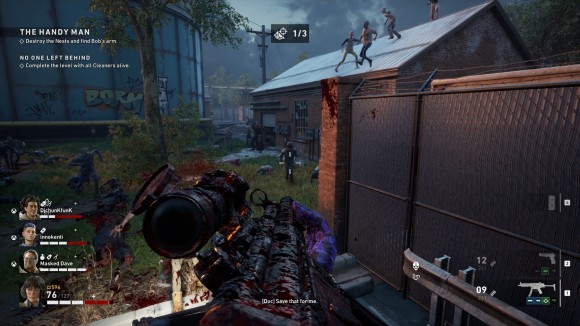
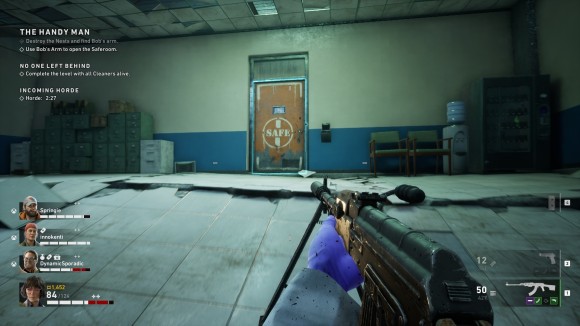
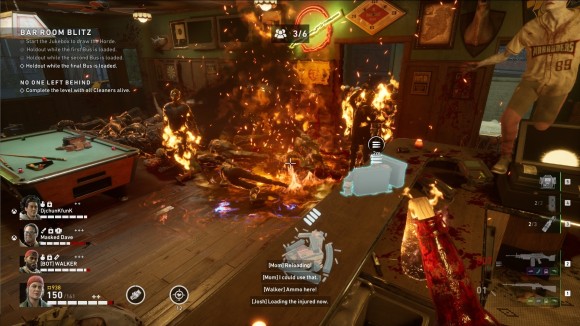
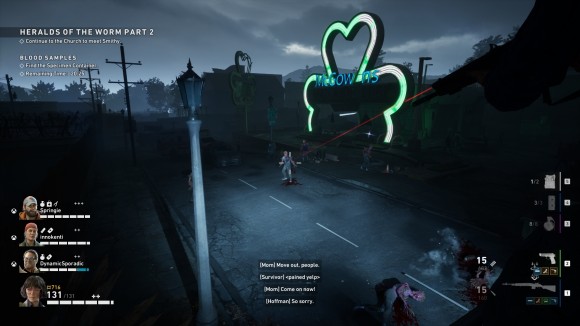
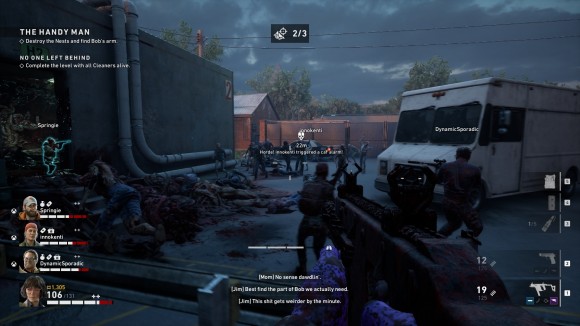
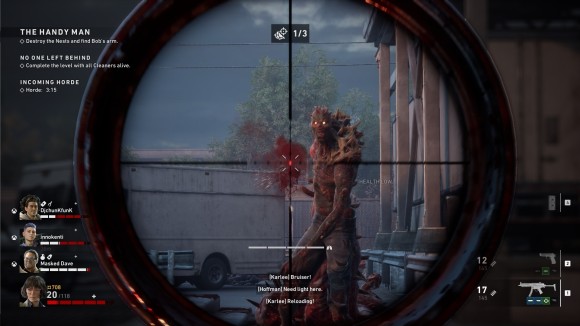
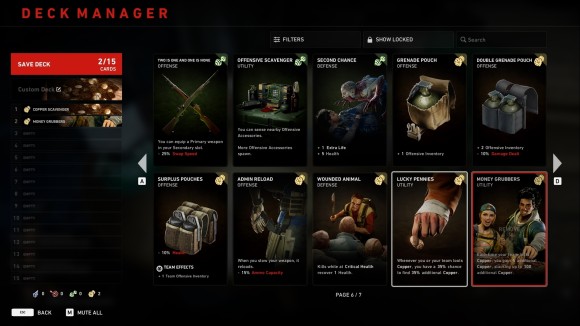
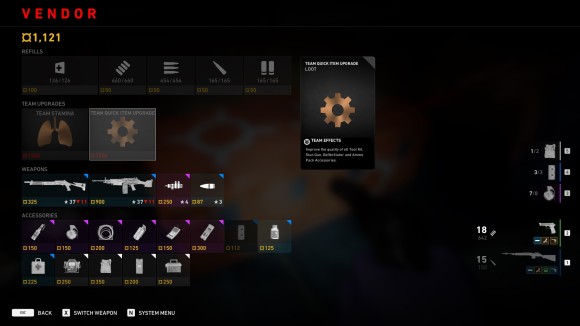
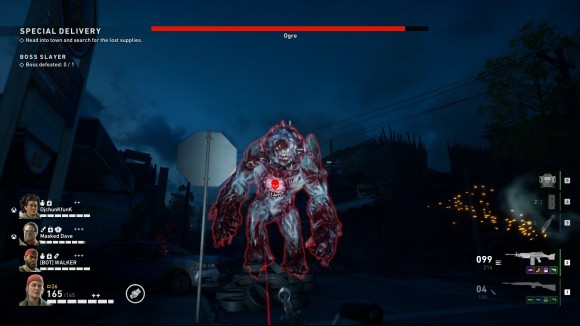
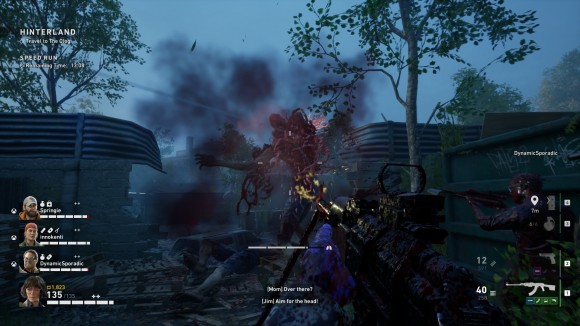
This is the most thorough analysis I’ve seen about why this game isn’t clicking with people like Left 4 Dead, and I’ve gotta say, you make a compelling argument. I had never thought about the PvP aspect, but it makes a lot of sense. It also helps explain why the PvP modes that so many games in this genre promise to add post-launch never materialize; it’s something that can’t realistically be added in after the fact.